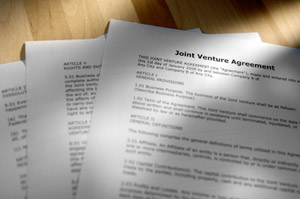 The federal antitrust laws prohibit merchants, including a acquisition of assets, that would tend to unreasonably restrain trade. Except in rare cases, a merger will unreasonable restrain trade only when the merging firms compete in the same relevant product and geographic markets and the post-merger firm would have market power, that is the ability to raise price or exclude competition.
The federal antitrust laws prohibit merchants, including a acquisition of assets, that would tend to unreasonably restrain trade. Except in rare cases, a merger will unreasonable restrain trade only when the merging firms compete in the same relevant product and geographic markets and the post-merger firm would have market power, that is the ability to raise price or exclude competition.
Small companies generally do not have market power. To determine whether a merger may produce market power, the federal enforcement agencies and the courts must determine the relevant market.
Defining the relevant product and geographic markets is a factually and legally complex exercise. In a nutshell, however, two competitors are in the same relevant market if a significant number of consumers would switch from one firm’s products to the other in response to a 5% price increase. For example, gasoline retailers A and B would be in the same geographic market if a significant number of customers would switch from A to B if both began charging $4 per gallon, and A raised its price to $4.20 per gallon. Similarly, two types of material for wrapping and storing food would be in the same produce market if consumers would switch from one to the other if the price of one increased by 5%.
Once the relevant market is determined, the enforcement agencies use a measure of concentration known as the Herfendale-Hirshman Index (“HHI”) to decide whether a merger is likely to create market power. This index is determined by summing the squares of the market shares of each firm in the relevant market. So, in a market with a single firm with a 100% market share, the HHI would be 10,000. A market with 10 firms with a 10% market share would have an HHI of 1000.
In general, the enforcement agencies will not investigate a merger if the post-merger HHI is less than 1000. If the merger increases the HHI by at least 50 and the post-merger HHI exceeds 1800, an investigation is likely. If the post-merger HHI falls between 1000 and 1800, and the merger produces an increase of at least 100, then an investigation is likely.
Courts are not bound to follow the enforcement agency guidelines with respect to the HHI. In general, however, courts, like the agencies, will find that the HHI is a useful device for identifying cases where competitive harm is possible.
It is important to recognize that HHI provides only an indication of potential concern with the the merger. Determining whether the merger would actually tend to result in an unreasonable restraint of trade requires considerable analysis to determine whether the post-merger firm would have the ability to raise price, reduce quality, or hinder innovation. A court will make this determination based on a number of factors, including whether the merger would make coordinated behavior with other competitors easier or whether it would create market power in the merged firm itself. An important aspect of the courts analysis would be the likelihood of new entry into the market if the post-merger firm raised prices.
Because merger analysis involves a hypothetical market, the enforcemen agencies and courts cannot look to actual harm to consumers in evaluating markets. They will therefore place considerable stock on the predictions of market participants and economic analysis of competitive practices in the market. This analysis is highly case specific.